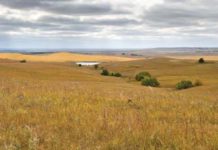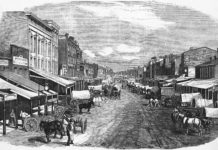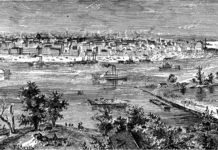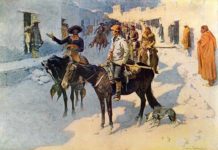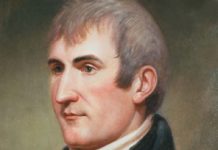Narcissa Prentiss remained at home, waiting to see what the future would bring. Shed had her chance. Perhaps she could have married Henry Spalding and could now be looking forward to a life as a missionarys wife. But that was not to be.
On Sunday evening, October 13, 1833 Miss Eliza Hart was wed to Henry Spalding in the chapel at South College. The Reverend Giles Doolittle performed the ceremony. It was somewhat ironical, considering that Spalding had previously voiced his displeasure with abolition and was in favor of sending all free Negroes to Africa, that when the Reverend Doolittle died he was buried in the cemetery at Hudson near the grave of Owen Brown. Brown, like his martyred son John, was a great abolitionist.
But, for now, Mr. and Mrs. Spalding continued their studies and strove to make ends meet now that Henry, because of his marriage, had lost the financial aid for education hed been receiving. In the spring of 1833, somewhere between their educational labors and caring for the borders theyd taken in, the Spaldings read the letter from William Walker that was printed in a Christian publication.
Walkers letter concerned four western Indians who had traveled all the way from the Rocky Mountains to St. Louis, Missouri. They were searching for the White Mans religion. Eliza and Henry probably, also, became aware of the departure of Jason Lee and his group for Oregon Country in 1834. Samuel Parker had also departed that same spring for St. Louis. Knowing that the savages from the Far West were earnestly seeking Christian instruction and that other religious persons had already taken that giant step westward surely added fuel to the Spaldings missionary fire.
Samuel Parker had continued on to the west and returned. He then made a second journey beyond the Rockies. This time, he was accompanied by another man, Doctor Marcus Whitman. The doctor, though not a minister, made the decision to seek a mission among the Indians of the west. This presented two problems for him. The first was that he needed to recruit more couples to accompany him. The couple part was his second problem. Dr. Whitman was a single man. He needed a wife, devout and supporting, to go west with him. To solve both of these dilemmas, Whitman returned to the East where at least one of his situations found a conclusion. He was introduced to Narcissa Prentiss. They were engaged to be married and Whitman returned west to seek a location for their mission.
Marcus Whitman
In the fall of 1834 Spalding began seeking a possible appointment as a missionary. But it was not until the spring of 1835 that Mr. Artemas Bullard, as agent of the newly organized Foreign Mission Society of the Presbyterian Church suggested they consider a teaching position for Indians offered by the government. Spalding was then advised to look for an appointment with the Choctaw tribe.
In the spring of 1835 Spalding received a letter from Mr. Bullard so encouraging that he decided to leave school when the present term was over. Strangely, the faculty where he studied also encouraged him to leave. Confident that he would receive official notice of an appointment at any time, the Spaldings made an extended farewell trip to visit Elizas family. When weeks passed and nothing came, Spalding turned to the American Board of Missionaries and on August 27, 1835 was ordained to the Gospel Ministry. The Spaldings would have been ready to start on their mission at any time except for one problem. As Spalding termed it, it was a circumstance of family.
In October of 1835 Eliza Spalding gave birth to a stillborn baby girl. They named her Mary before they buried her. About this same time the Spaldings received definite word of their appointment to the Osage Indians at Boudinot in present-day western Missouri.
Also about this same time Doctor Marcus Whitman returned from the Rocky Mountains, after an exploring trip with the Reverend Samuel Parker. Whitman had heard of Spalding and his appointment to the Osage. He contacted Spalding, though nothing is known of what transpired between the two. However, Whitman sent the journal of his trip to the board and requested they appoint Mr. Spalding to the Oregon venture he and his soon-to-be bride were about to undertake.
Whitman found his volunteers. However, one couple that had elected to go west with him became disqualified when the mission board discovered they had a child. Then another couple decided they did not want to travel that far west. For a time it looked as though Whitmans mission would never be founded.
But not all was lost. A third couple volunteered for the westward mission, the Reverend and Mrs. Henry Harmon Spalding whom the American Board of Foreign Missions looked upon with ill favor. But that was not the only problem. A new situation would arise later when there was talk of the Whitmans and the Spaldings sharing a missionand when Henry discovered who the future Mrs. Whitman was to be.



